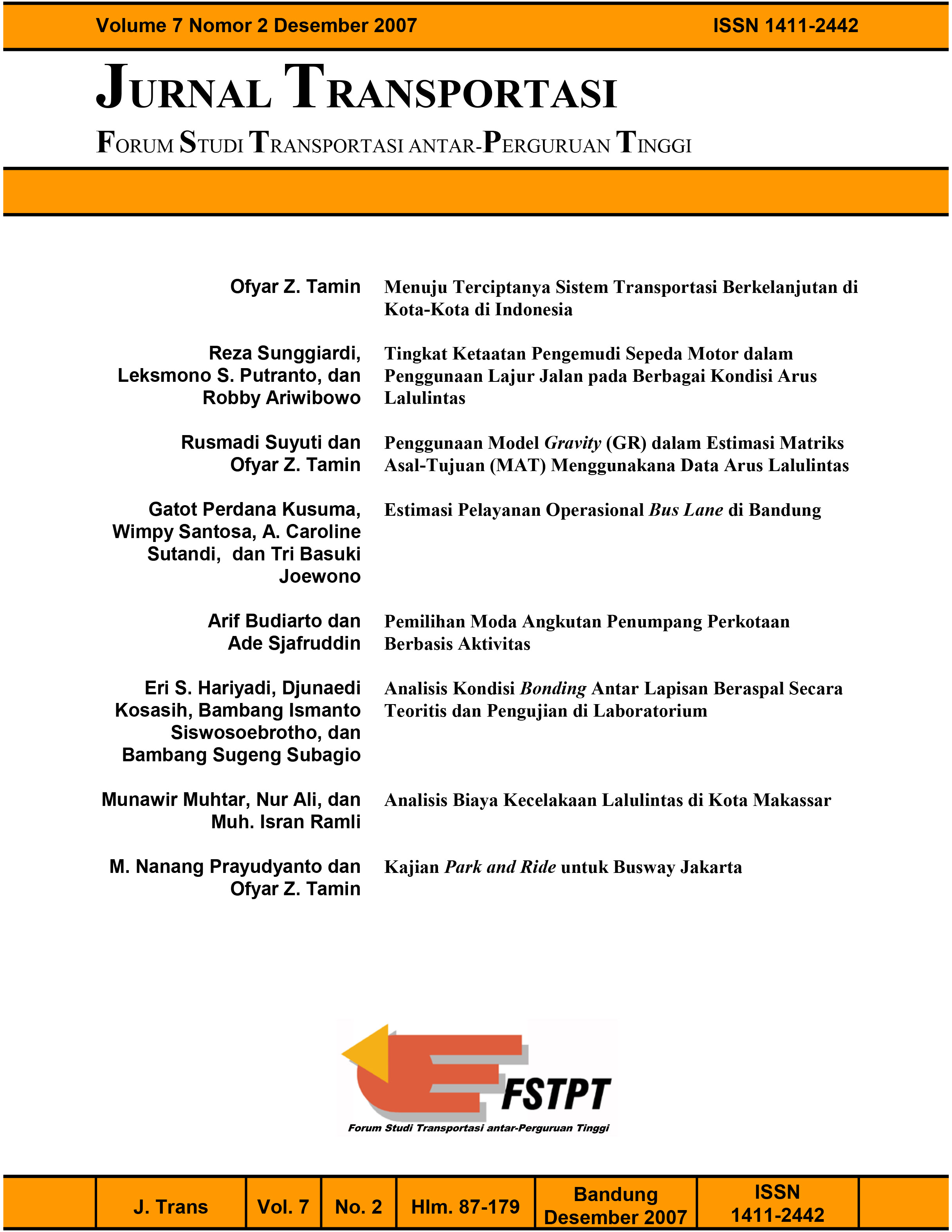PENGGUNAAN MODEL GRAVITY (GR) DALAM ESTIMASI MATRIKS ASAL-TUJUAN (MAT) MENGGUNAKAN DATA ARUS LALULINTAS
DOI:
https://doi.org/10.26593/jtrans.v7i2.1822.%25pAbstract
Abstract
Many problems in transport planning and management tasks require an origin-destination (O-D) matrix to represent the travel pattern. However, O-D matrices obtained through a large scale survey such as home or road side interviews, tend to be costly, labour intensive and time disruptive to trip makers. Therefore, the alternative of using traffic counts to estimate O-D matrices is particularly attractive. Models of transport demand have been used for many years to synthesize O-D matrices in study areas. A typical example of this is the gravity model (GR); its functional form, plus the appropriate values for the parameters involved, is employed to produce acceptable matrices representing trip making behaviour for many trip purposes and time periods. Four estimation methods have been analysed and tested to calibrate the transport demand models from traffic counts, namely: Non-Linear-Least-Squares (NLLS), Maximum-Likelihood (ML), Maximum-Entropy (ME) and Bayes-Inference (BI). The Bandung’s Urban Traffic Movement survey has been used to test the developed method. Based on several statistical tests, the estimation methods are found to perform satisfactorily since each calibrated model reproduced the observed matrix fairly closely. The tests were carried out using two assignment techniques, all-or-nothing and equilibrium assignment.
keywords : transportation model, O-D matrices, estimation method, trip distribution, trip assignment


